Project Description
This project “How Far Are You?” plays with depth and distorts people’s perception of distance with a pair of half-inverted telescope glasses. Two sets of concave-convex lenses are attached to a normal pair of glasses with them installed in opposite directions. As a result, you see a magnified world in one eye and a minificated world in another. This creates a sense of confusion as people can no longer accurately perceive the distance of an object using their sight.
I was first intrigued by the looking-backward glasses we experienced in class. While wearing those glasses, I noticed that I was able to see backwards but could not tell how far behind things were. This experienced inspired to explore the interplay between vision and depth perception. My other inspiration came from cameras. As we know, many camera lenses can zoom in an out. What if we give the capabilities to human eyes? I am interested in exploring these two concepts and see how they may interfere or support each other.
Perspective and Context
I see a connection between my project and Maurice Merleau-Ponty’s stance on the world of perception and the world of science. He talks about people’s tendency to overly rely on science to explain our experiences without consulting our own senses. The way we use our vision is definitely a good example of this bad habit. We learn in textbooks that we see things because light passes through eyes to our retina and they get converted into impulses for our brain to interpret. While the theory is true, this is more than complete. By confining ourselves to science, we are closing doors to experience and find meanings in other possibilities of our visual perception. This project, by distorting people’s vision, invites participants to re-feel their sense particularly sight and reevaluate the perceived world. In addition, people are too used to utilizing vision that they don’t appreciate the act of seeing. I want this project to remind people that seeing is such an important perception. How we see the world is affected by our holistic visual perception not just the science behind vision.
Development & Technical Implementation
My initial concept was shown in the first sketch below.
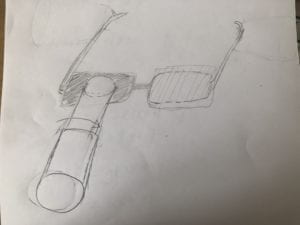
My idea was to attach a homemade “telescope” lens to the normal glasses so that one eye would have a normal vision and the other eye would possess a magnified vision. I also wanted to experiment with adding color filters but I ended up getting rid of that component since it did not greatly enhance the whole experience.
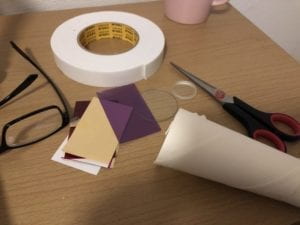
An obvious problem came up after I tried out the prototype. Because one of my eyes still had normal vision, I tend to shift focus to that normal eye and ignore vision from the distorted eye. The sensory experience I wanted to achieve was hard to attain with the initial setup. After discussing with the instructor, we decided to use these telescope lenses on both sides which worked out well at the end.
The final implementation of the project include one pair of normal glasses with one homemade telescope lens attached to each side. The left side is for magnifying and the right is for minifying. 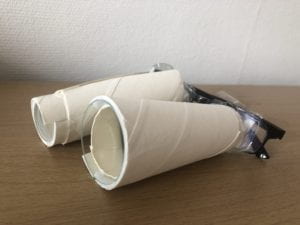
A mockup of how each side would look like is shown below: 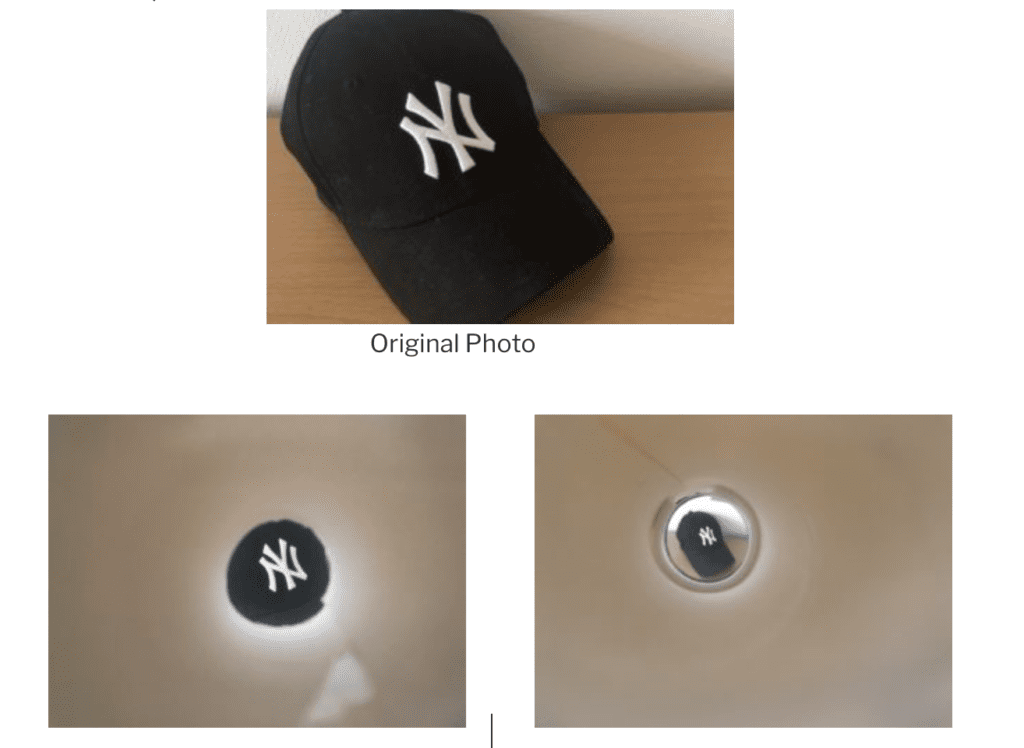
Left Right
Additionally, this pair of glasses have the ability to zoom in and out to a certain extent. It functions similar to a camera lens. By moving the paper rolls by hand, people can change what they see accordingly.
Presentation
For the class presentation, I begin by asking the participant to stand facing back and then got a volunteer to stand in front of her at a distance. The participant first observed the volunteer from one side at a time. Even though she and the volunteer did not move during the process, she perceived the volunteer to be at different distances away from her when switching between her two eyes. This experience of distorted distance perception was what I was aiming for. Other classmates were interested in this project and also tried it out. While the presentation received a satisfiable result, I heard a better proposal which was not only let the participant say what she/he sees about also feel it. Essentially I could let the participant walk towards the volunteer as where she perceives he is. Once she realizes that the volunteer is not actually there, this could create a more dramatic sensory experience. 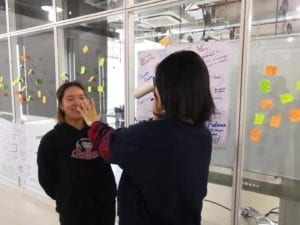
In terms of the second function – zooming in and out, I presented it a subsidiary function. It did not receive as much of a feedback. In retrospection, there were two reasons to explain: 1) I presented the second too late and people were also interested in the first function. 2) The way zooming in and out functions is not quite user-friendly for first-time participants. I have to recognize that it is easy for me to use does not mean it is the case for everyone. I should have designed a smoother method to push and pull the paper rolls.
This also made me ponder whether it is necessary to have two functions in this case. During the presentation, it seemed like people are enough interested in the first concept that the second one feels unnecessary. It would be more effective if I had separated the two and created one device for each.
Conclusion
I thoroughly enjoyed this project and learned a lot during the process. Here are my major takeaways. First, ideas and conceptions rarely directly translate to final products. It takes adjustments, fine-tuning and sometimes majors changes in the creation stage. For this project, I made big modifications since my original sketch to achieve the results I wanted. Second, presentation is very important and user experience is vital. I need major improvements in these aspects. The appearance of my final product looked too plain and undecorated. The whole structure is lacking stable assembly. People had to hold the glasses while talking which is not ideal. In terms of functions, the zooming in and out part is not the easiest for users to experience. In the future, if I am creating works for others to participate, I should take more considerations into how my project is presented to the users and how they can interact smoothly. I hope I can bring these takeaways with me in upcoming projects and other artistic creations.